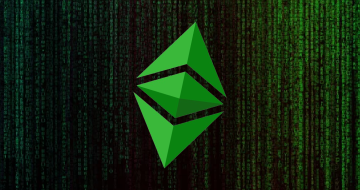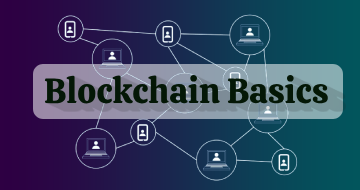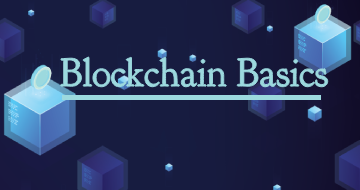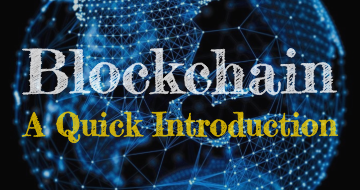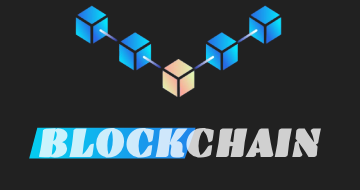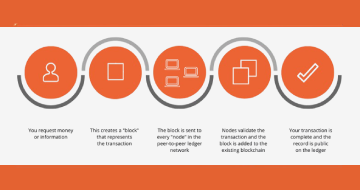IIRF Online > Finance & Accounting > Cryptocurrency & Blockchain > Blockchain > Introduction to Blockchain for Global Commerce
Introduction to Blockchain for Global Commerce by Coursera
Course Highlights
- How blockchain works, and how trust is established in a pre- and post-blockchain world
- Nine types of digital assets, including cryptocurrencies, protocol tokens, NFTs, stablecoins, securities tokens, governance tokens, and CBDCs
- What smart contracts are, the phases of a smart contract deal cycle, and various examples and applications of smart contracts
- Blockchain design principles, and challenge areas associated with implementing blockchain technology
Skills you will learn!
Curriculum
29 Topics
Specialization Overview
Course 1 Welcome from FedEx
Instructor Introduction
Module 1 Overview
The Internet of Information
In Search of the Trust Protocol
What is Blockchain?
Practitioner Perspective: Andreas Wallendahl Head of Strategic Initiatives at ConsenSys
Practitioner Perspective: Rob Carter Executive VP and CIO FedEx
Achieving Trust in the Digital Age
How Blockchain Works
Recap of Module 1
The Internet of Information
In Search of the Trust Protocol
What is Blockchain?
Achieving Trust in the Digital Age
How Blockchain Works
Blockchain Demo
Review of Module 1
The Internet of Information
In Search of the Trust Protocol / What is Blockchain
Achieving Trust in the Digital Age
How Blockchain Works
The Second Era of the Internet
Steps of a Blockchain Transaction
Your Goals for this Course
Limitations of the Internet
Explain Blockchain to a Friend or Family Member
Evolution of Blockchain to 2022
26 Topics
Module 2 Overview
Intro to Blockchain Design Principles
Principle 1: Networked Integrity
Principle 2: Distributed Power
Practitioner Perspective: Rob Carter Executive VP and CIO FedEx
Principle 3: Value as Incentive
Principle 4: Security
Principle 5: Privacy
Principle 6: Rights Preserved
Principle 7: Inclusion
Practitioner Perspective: Julie Maupin Director of Social Impact & Regulatory Affairs at IOTA Foundation
Recap of Module 2
Principle 1: Networked Integrity
Principle 2: Distributed Power
Principle 3: Value as Incentive
Principle 4: Security
Principle 5: Privacy
Principle 6: Rights Preserved
Principle 7: Inclusion
Review of Module 2
Principle 1: Networked Integrity
Principle 2: Distributed Power
Principle 3: Value as Incentive
Principle 4: Security
Privacy Rights and Inclusion
Blockchain Design Principles
28 Topics
Module 3 Overview
Cryptocurrencies
Protocol Tokens
Non-Fungible Tokens (NFTs)
Stablecoins
Securities Tokens
Governance Tokens
Exchange Tokens
Natural Asset Tokens
Central Bank Digital Currencies (CBDCs)
Module 3 Recap
Digital Wallets (Optional)
Cryptocurrencies
Protocol Tokens
Non-Fungible Tokens (NFTs)
Stablecoins
Securities Tokens
Governance Tokens
Exchange Tokens
Natural Asset Tokens
Central Bank Digital Currencies (CBDCs)
Review of Digital Assets
Digital Wallets (Optional)
Cryptocurrencies Protocol Tokens and NFTs
Stablecoins Securities Tokens and Governance Tokens
Exchange Tokens Natural Asset Tokens and CBDCs
Digital Assets
Digital Assets
22 Topics
Module 4 Overview
What Are Smart Contracts?
Practitioner Perspective - Rolf Hoefer: Smart Contracts
Smart Contract Phases
Smart vs. Traditional Contracts
Smart Contracts and Law
Practitioner Perspective - Andreas Wallendahl: Smart Contracts
Smart Contract Application Areas
Practitioner Perspective: Rob Carter Executive VP and CIO FedEx
Smart Contract Strategies & Best Practices for the Organization
Recap of Module 4
Smart Contracts
Smart vs. Traditional Contracts
Smart Contract Application Areas
Review of Smart Contracts
What Are Smart Contracts?
Smart Contract Phases
Smart vs. Traditional Contracts
Smart Contracts and Law
Smart Contracts
How smart are smart contracts?
Leveraging Smart Contracts
23 Topics
Module 5 Overview
The Benefits of Shared Knowledge
How Much is Too Much Transparency
Centralized vs. Distributed Ledgers
Public vs. Private Ledgers
Practitioner Perspective: Rolf Hoefer Keyless Technologies
Practitioner Perspective: Andreas Wallendahl Head of Strategic Initiatives at ConsenSys
Transparency as a Strategic Risk
Transparency as a Strategic Asset
Usage of Multiple IDs
Zero Knowledge Proofs
Implementation in Public vs. Private Blockchains
Recap of Module 5
Intro to Transparency
Public vs. Private Ledgers
Approaches to Privacy in Blockchains
Review of Module 5
Intro to Transparency
Public vs. Private Ledgers
Transparency as a Risk and Asset
Approaches to Privacy in Blockchains
Public and Private Ledgers
Transparency as a Risk and an Asset
38 Topics
Module 6 Overview
Overcoming Showstoppers
Challenge 1: The Technology is Not Ready for Prime Time
Challenge 2: The Energy Consumed is Unsustainable
Challenge 3: Governments Will Stifle or Twist It
Practitioner Perspective: Oleg Fomenko Co-Founder at Sweatcoin
Practitioner Perspective: Will Harborne Director of Operations at Ethfinex
Challenge 4: Powerful Incumbents of the Old Paradigm Will Usurp It
Challenge 5: The Incentives are Inadequate
Challenge 6: Blockchain is a Job Killer
Challenge 7: Governing the Protocols
Practitioner Perspective: Rob Carter Executive VP and CIO FedEx
Challenge 8: Distributed Autonomous Agents
Challenge 9: Privacy
Challenge 10: Criminals Will Use It
Reasons Blockchain Will Fail or Implementation Challenges?
The Technology is Not Ready For Prime Time
The Energy Consumed is Unsustainable
Governments Will Stifle or Twist It
Powerful Incumbents of the Old Paradigm Will Usurp It
The Incentives are Inadequate
Blockchain is a Job Killer
Governing the Protocols
Distributed Autonomous Agents
Privacy
Criminals Will Use It
Blockchain Implementation Challenges
The Technology is Not Ready For Prime Time
The Energy Consumed is Unsustainable
Powerful Incumbents of the Old Paradigm Will Usurp It
The Incentives are Inadequate
Blockchain is a Job Killer
Governing the Protocols
Distributed Autonomous Agents
Privacy
Criminals Will Use It
Blockchain Implementation Challenges
Blockchain Implementation Challenges

Introduction to Blockchain for Global Commerce

